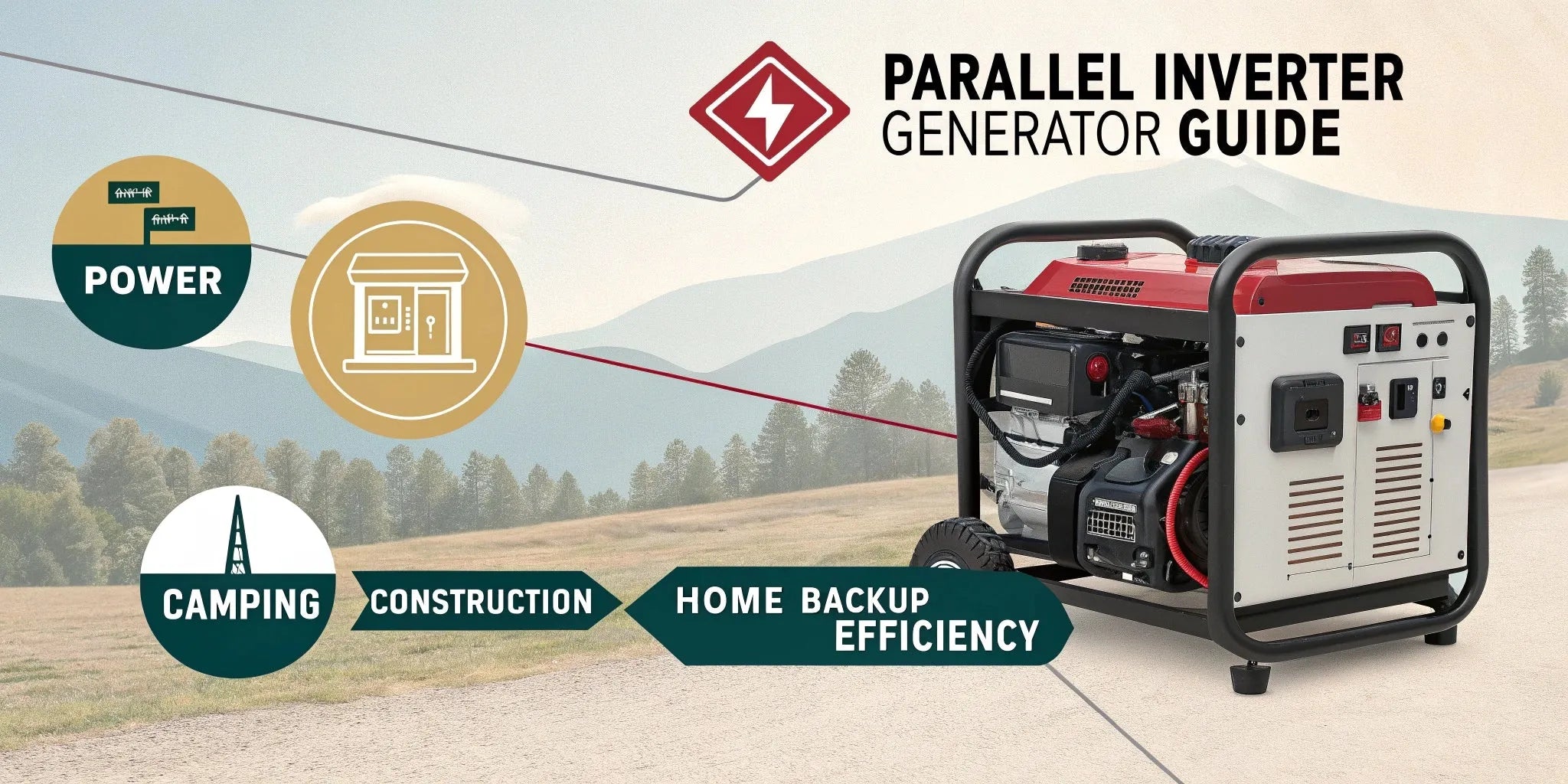Parallel Inverter Generators: A Comprehensive Guide
In today's fast-paced world, having a reliable power source is essential. Whether you're a tech-savvy homeowner, an eco-conscious product developer, or a consumer electronics retailer, understanding the benefits and functionalities of parallel inverter generators can be a game-changer. This comprehensive guide will explore the intricacies of these power solutions and how they can meet your specific needs.
Parallel inverter generators are a versatile and efficient power solution that allows you to connect two or more generators to increase power output without compromising on efficiency or portability. These generators are particularly popular due to their ability to provide stable and clean power, making them ideal for sensitive electronics and modern smart home systems.
How Do They Work?

The concept of paralleling involves synchronizing two generators to work together as a single, more powerful unit. By connecting generators with a parallel kit, you can double or even triple the power output, making it possible to power larger appliances or entire homes during an outage.
Parallel inverter generators utilize advanced technology to ensure that the power output is consistent and reliable. This makes them suitable for powering sensitive electronics, such as laptops, smartphones, and smart home devices, which require clean and stable energy.
Key Benefits of Parallel Inverter Generators
Increased Power Output
One of the most significant advantages of parallel inverter generators is the ability to increase power output. By connecting two generators, you can achieve a combined wattage that meets higher energy demands without investing in a single, larger generator.
Portability and Flexibility
Parallel inverter generators are known for their compact size and lightweight design. This makes them easy to transport and ideal for outdoor activities, such as camping or tailgating, where power needs might vary. The flexibility to connect multiple units also means you can adjust power output as needed.
Fuel Efficiency
Inverter generators are engineered to be fuel-efficient, adjusting engine speed to match power demand. This not only reduces fuel consumption but also minimizes emissions, aligning with eco-friendly practices. This feature is particularly appealing to eco-conscious product developers and homeowners looking to reduce their carbon footprint.
Quiet Operation
Unlike traditional generators, inverter generators operate quietly, thanks to their advanced noise-reduction technology. This makes them suitable for residential areas, ensuring you can maintain peace and tranquility while enjoying uninterrupted power.
How to Connect Two Generators Together
Connecting two generators in parallel is a straightforward process with the right tools and knowledge. Here's a step-by-step guide:
Step 1: Choose the Right Parallel Kit
Selecting the appropriate parallel kit is crucial. Ensure the kit is compatible with your generator models and supports the desired power output. Some kits, like the 50 amp parallel kit, cater to higher power needs, making them ideal for running multiple heavy-duty appliances simultaneously.
Step 2: Position the Generators
Place the generators on a flat, stable surface with adequate ventilation. Ensure they are close enough to connect with the parallel kit cables but far enough apart to prevent overheating.
Step 3: Connect the Parallel Kit
by DNK.PHOTO (https://unsplash.com/@dnkphoto)
Follow the manufacturer's instructions to connect the parallel kit cables to the designated parallel ports on each generator. Double-check connections to ensure they are secure and correct.
Step 4: Start the Generators
Start both generators and allow them to reach operating temperature. Once stabilized, they will synchronize automatically, providing a combined power output.
Step 5: Test the Setup
After connecting the generators, test the setup by plugging in your devices or appliances. Monitor the system for any irregularities and ensure it meets your power requirements.
Can You Parallel Two Different Wattage Generators?
Yes, it is possible to parallel two different wattage generators, but there are some considerations to keep in mind. The total power output will be limited to the capacity of the smaller generator. Additionally, ensure both generators are inverter models and compatible with the parallel kit being used.
Practical Applications of Parallel Inverter Generators
Home Backup Power
For tech-savvy homeowners, parallel inverter generators offer a reliable backup power solution. They ensure that your smart home systems remain operational during power outages, maintaining comfort and security.
Outdoor Activities
Whether you're camping, hosting a tailgate party, or enjoying a day at the beach, parallel inverter generators provide the flexibility to power various devices without the need for cumbersome power sources.
Eco-Friendly Product Development
For eco-conscious product developers, integrating parallel inverter generators into your designs can enhance product appeal by offering sustainable and efficient power solutions that align with consumer values and industry standards.
Conclusion
Parallel inverter generators represent a significant advancement in power technology, offering increased output, portability, and efficiency. By understanding their benefits and practical applications, you can make informed decisions that enhance convenience, reliability, and sustainability.
Whether you're seeking to improve your home's power resilience, develop eco-friendly products, or educate customers on complex technology, parallel inverter generators provide a versatile solution that meets the demands of modern power needs. Embrace this technology to stay ahead in an ever-evolving landscape of power solutions.






